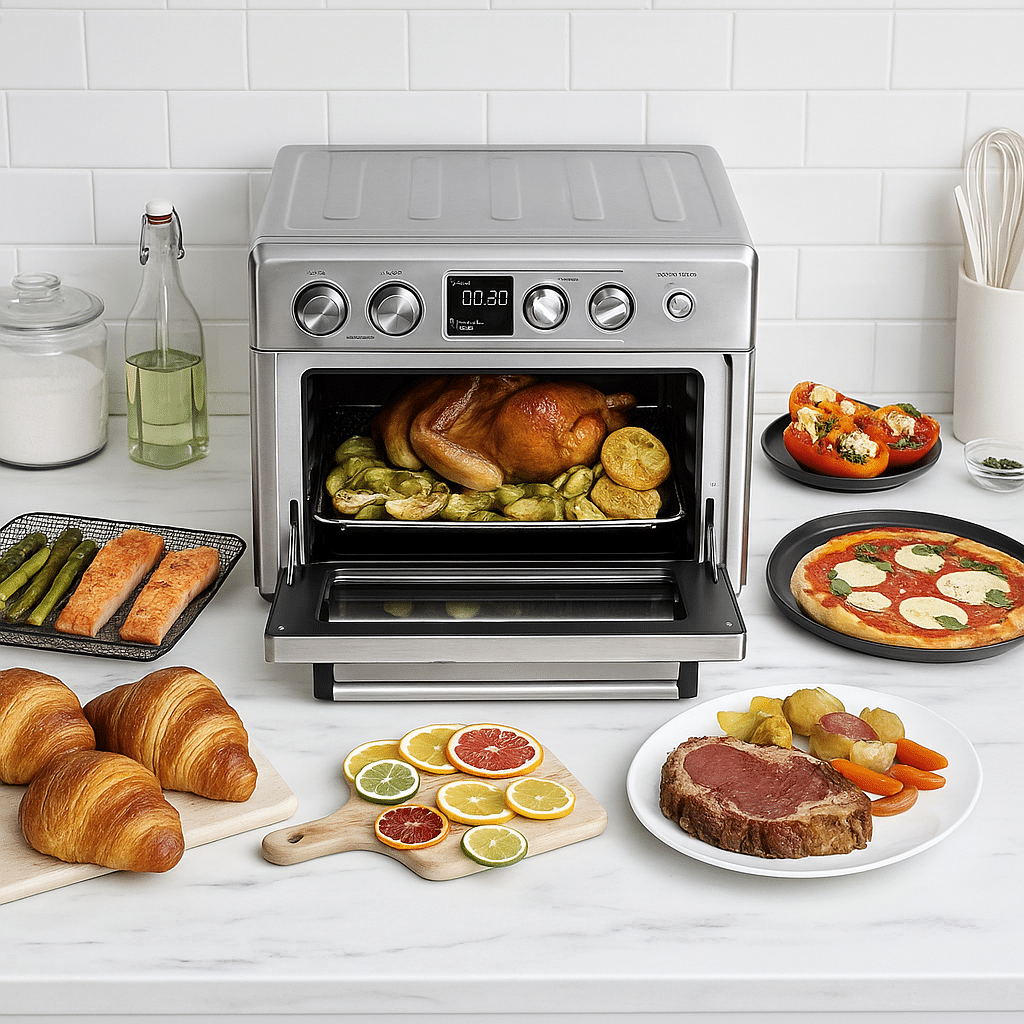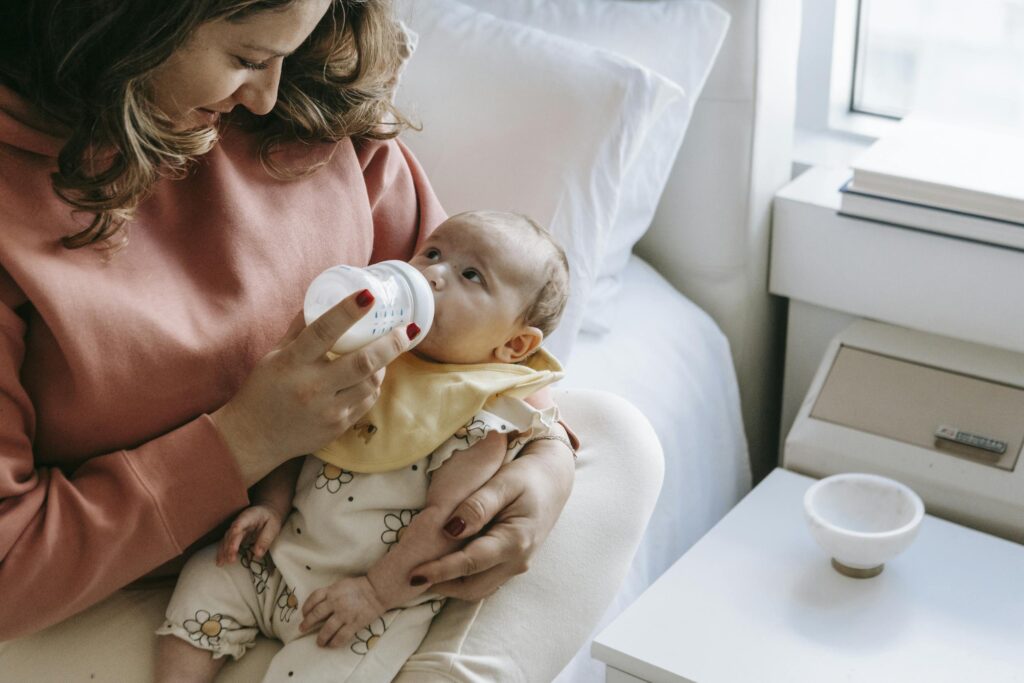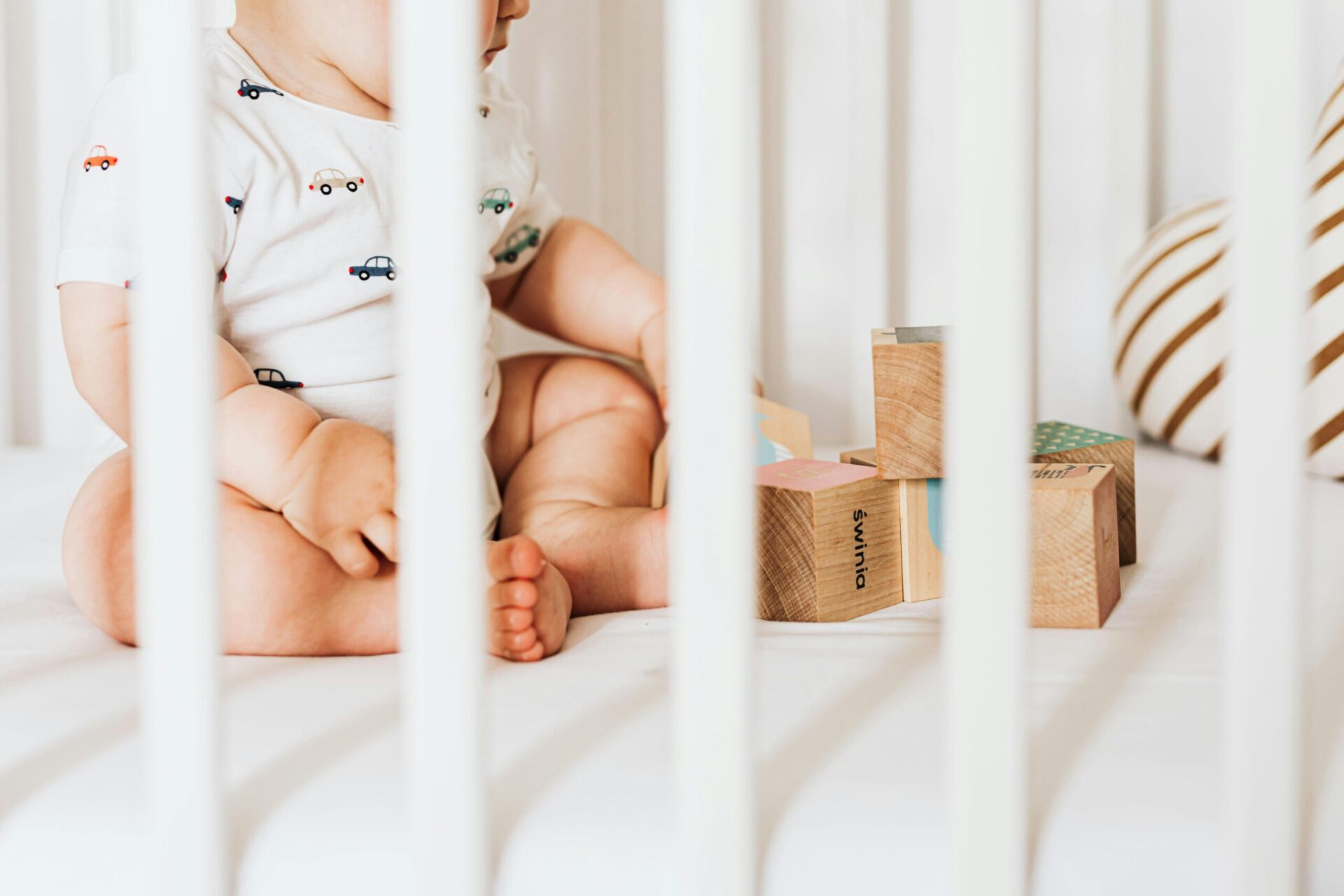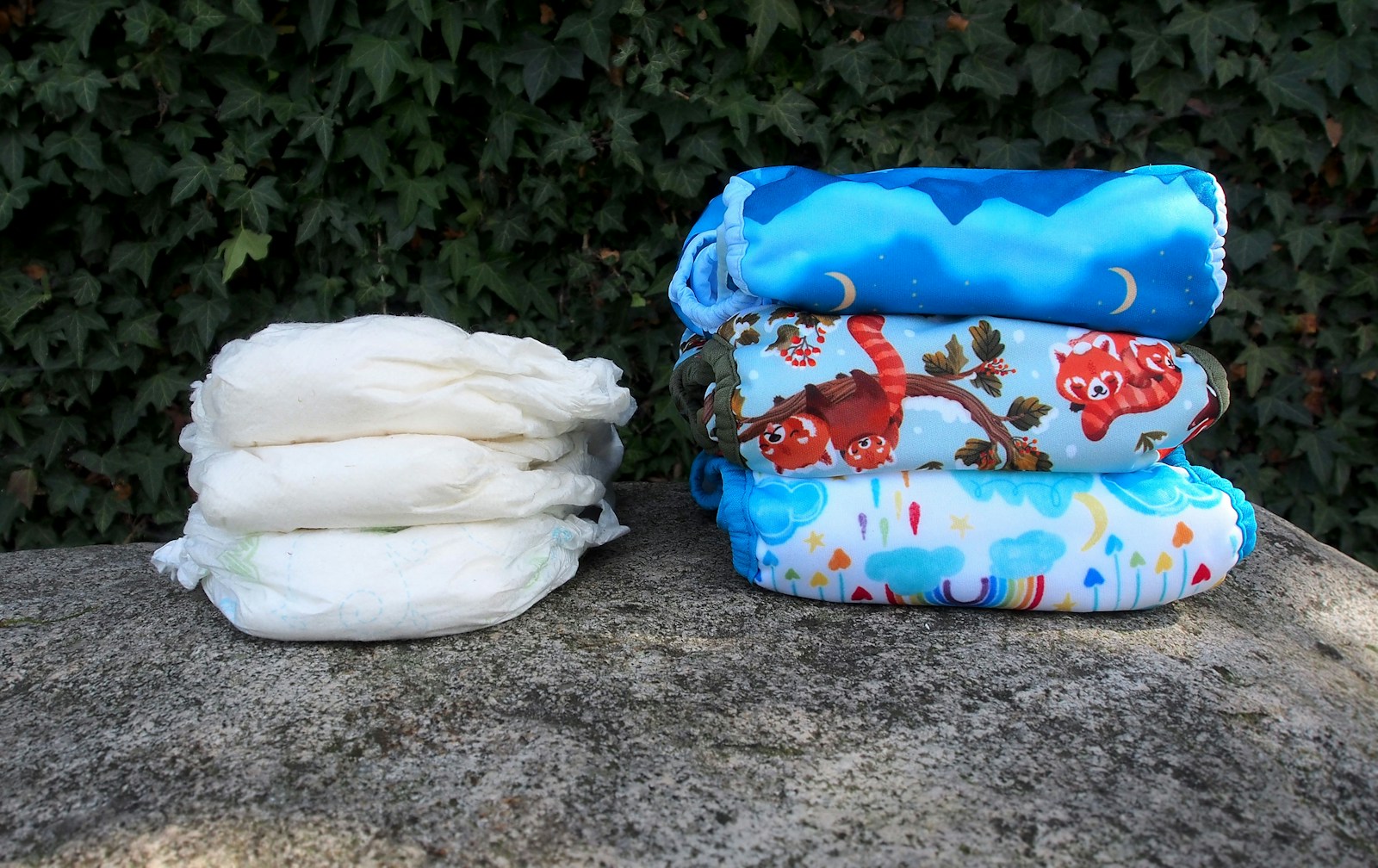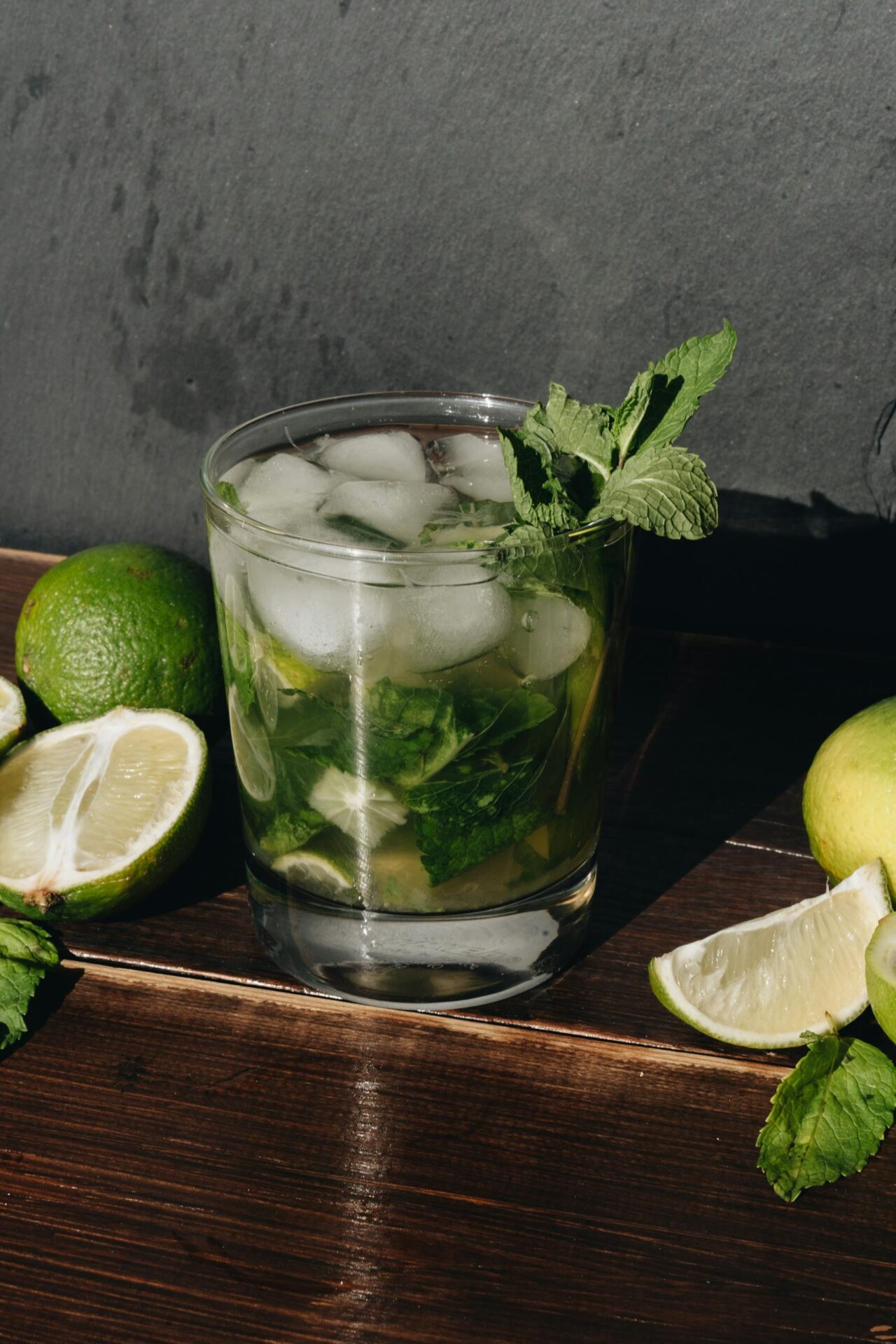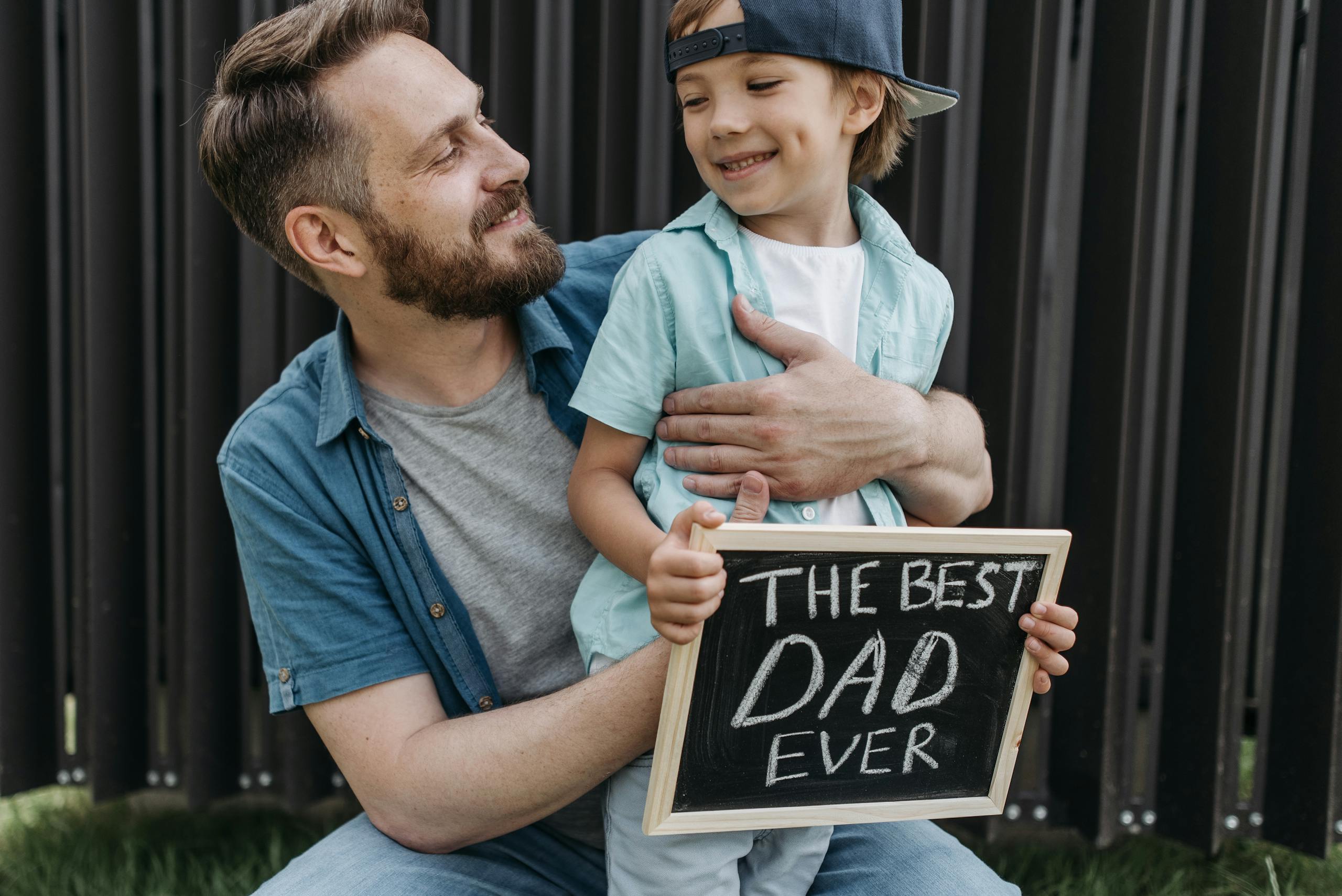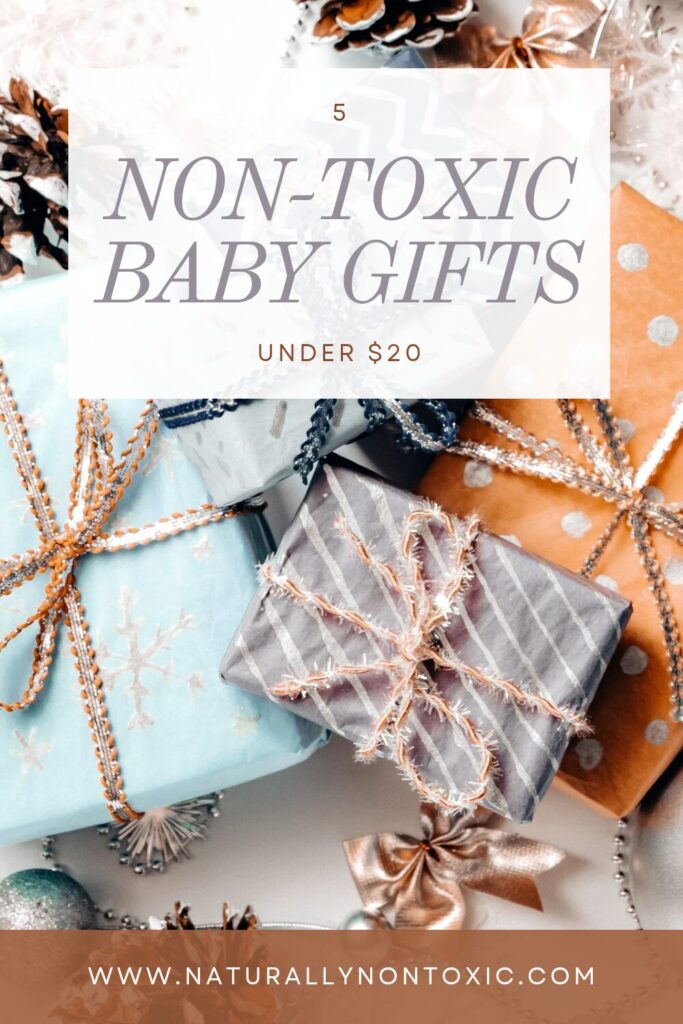
Did you know that babies put their hands (and anything else they can grab) in their mouths about 81 times an hour?! That means the gifts your baby unwraps this holiday season should be non-toxic! I’m here to help you learn how to choose non-toxic baby gifts.
Since babies are constantly putting things in their mouths, it’s important to make sure everything within their reach, especially their new favorite toy, is free from harmful substances. I never realized how overwhelming this could be until I stood in the middle of the toy aisle in a large department store.
Plastic – plastic everywhere! It was discouraging to see so much plastic lining the shelves that were meant for babies and children. I had to look very hard just to find some toys made from wood instead of plastic, so I completely understand the struggle.
Why Choose Non-Toxic Baby Gifts?
Babies are natural explorers, learning about the world by touching, tasting, and chewing everything in reach. That teether? Straight to the mouth. That lovey? Snuggled against their delicate skin. That’s why the materials in their toys, clothes, and gear matter more than we often realize.
Many conventional baby products contain harmful chemicals like phthalates, BPA, formaldehyde, and even lead—yes, lead. These toxins can irritate sensitive skin, disrupt developing systems, and pose long-term health risks. Babies absorb more, breathe faster, and aren’t equipped to filter toxins as adults do, making them especially vulnerable.
Choosing non-toxic, safe baby gifts does more than show thoughtfulness—it protects their health. It helps create a safer, healthier space for them to grow, play, and thrive. And that’s a gift that truly lasts.
But not every product labeled “safe” or “natural” lives up to the claim. Some cute-looking items can hide harmful chemicals that don’t belong near a baby.
5 Toxic Things To Avoid When Choosing Baby Gifts:
To make sure your gift is as safe as it is thoughtful, here are 5 items to steer clear of when shopping for baby:
1. Harmful Chemicals in Plastics:
Plastics are everywhere in the baby aisle. They’re colorful, affordable, and seem convenient for busy parents. But many of those plastic toys, bottles, and teethers can hide some pretty nasty chemicals. Hence, my ever-growing hatred for all things plastic!
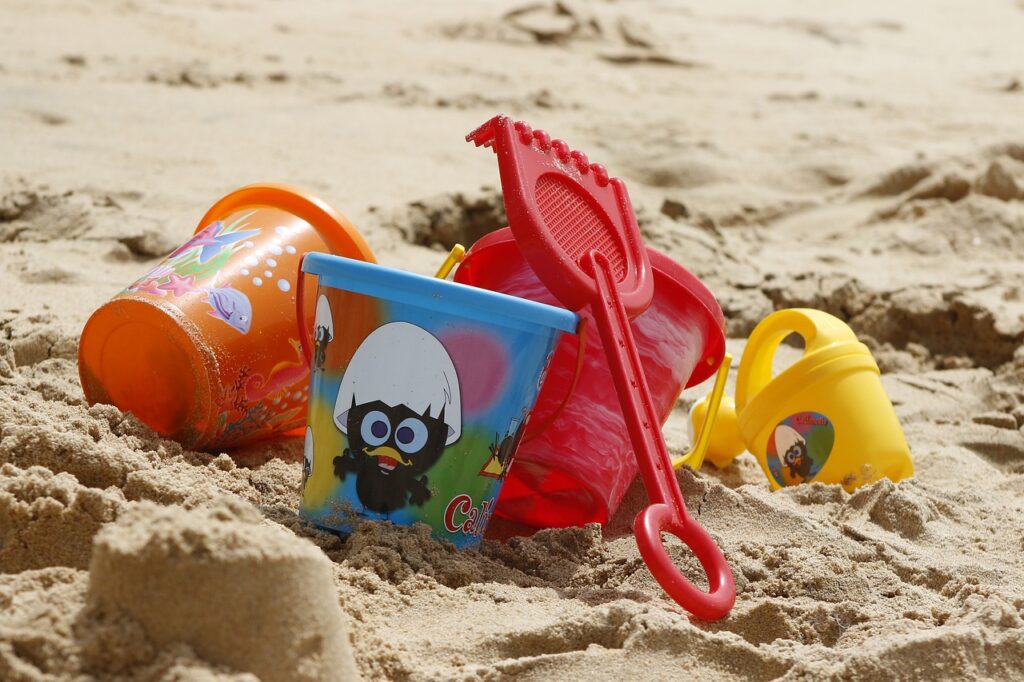
- BPA and BPS: You’ve probably seen “BPA-free” on baby products, but did you know its replacement, BPS, isn’t much better? Both are chemicals used in hard, clear plastics (like sippy cups and bottles) that can mess with your baby’s hormones. If you spot a #7 recycling code on plastic, that’s usually a red flag!
- Phthalates: These sneaky chemicals are added to make plastic soft and squishy—think rubber duckies, chew toys, and bath books. Phthalates have been linked to hormone issues and developmental problems. Unfortunately, most labels won’t tell you if they’re there, so it’s best to avoid plastic toys anyways!
- PVC (Polyvinyl Chloride): This one’s sometimes called “the poison plastic” for a reason. PVC, often disguised as “vinyl,” can release toxic chemicals like lead and dioxins. You might find it in soft plastic toys, inflatable baby pools, or even baby books. Look for the #3 recycling code (if it’s even listed) and steer clear.
- Heavy Metals: Yep, it’s scary, but some plastic toys contain heavy metals like lead or cadmium. These can show up in brightly colored or metallic-coated plastics (think mardi gras beads).
2. Toxic Dyes and Fabrics:
Tiny baby clothes and cozy blankets are some of the sweetest gifts—who doesn’t melt at the sight of a little onesie or a perfectly folded swaddle? But those adorable items might be hiding more than softness and charm. Bright colors, wrinkle-free finishes, and stain-resistant coatings often come with a cocktail of chemicals that have no place near a baby’s delicate skin.
- Azo Dyes: These dyes are behind the vibrant colors that make baby clothes look so cheerful, but some azo dyes can break down and release chemicals called carcinogenic amines. Yep—carcinogenic. It’s as bad as it sounds, and babies are especially vulnerable to those kinds of toxins.
- Formaldehyde: You know how some clothes feel stiff, perfectly wrinkle-free, or have that “new clothes” smell? That’s often formaldehyde, a chemical used to keep fabrics looking fresh. But the trade-off isn’t worth it. Formaldehyde can irritate skin and cause breathing issues—things you definitely don’t want for your baby.
- Flame Retardants: Some baby pajamas and blankets are treated with flame retardants to meet safety standards. The intention is good, but the reality? Many of these chemicals are linked to hormone disruption, developmental issues, and even cancer. Fire safety matters, of course, but there are safer, chemical-free ways to keep baby protected.
- Polyester: Polyester is cheap, durable, and everywhere. But here’s what they don’t tell you: it’s made from petrochemicals. Residue from the production process can irritate your baby’s skin, and because polyester doesn’t breathe, it can trap moisture and heat, leaving babies sweaty and uncomfortable. On top of that, polyester sheds microplastics, which isn’t great for your baby—or the planet.
3. Heavy Metals:
Lead, cadmium, and arsenic are not just dangerous; they’re downright toxic, especially to little ones whose bodies and brains are still growing. Unlike some other toxins, heavy metals can’t just be washed off—they’re baked right into the material during manufacturing. Once they’re in a baby’s system, they can linger for years, quietly causing damage.
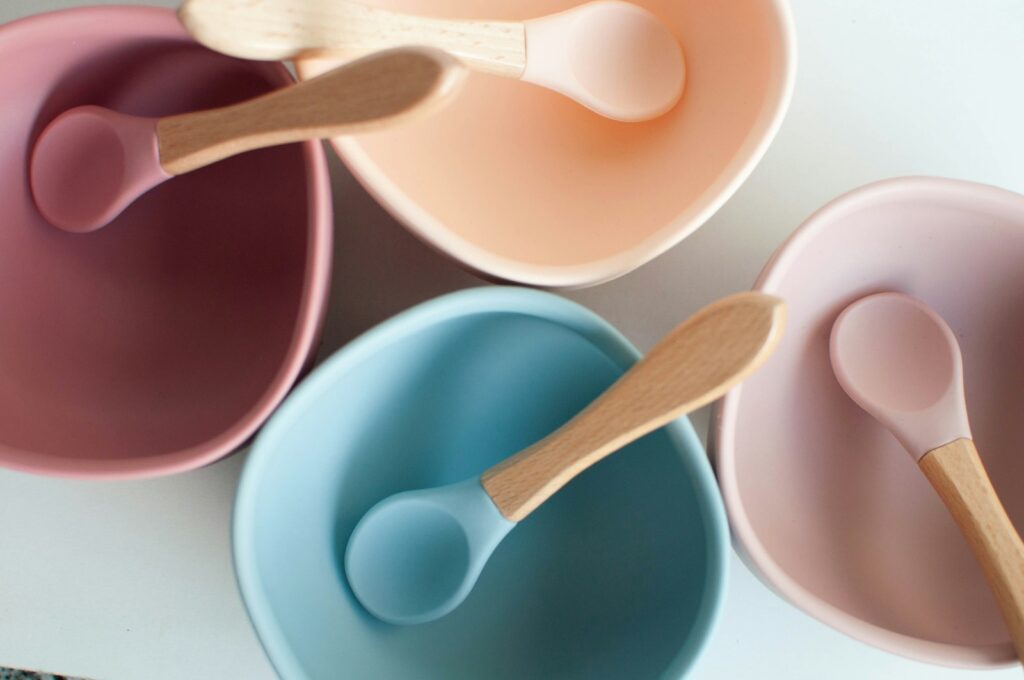
- Lead: Remember all those recalls over lead paint on toys a few years ago? That wasn’t just a one-off scare. Lead is a serious neurotoxin, meaning it can affect brain development, lower IQ, and even cause behavioral issues. It’s most often found in painted surfaces (like on wooden toys or plastic-coated products), and the risk is even higher if the paint chips or wears off—something curious little hands and mouths are sure to explore.
- Cadmium: This one often flies under the radar, but it’s very concerning. Exposure can damage kidneys, weaken bones, and interfere with development. It’s especially dangerous because it tends to accumulate in the body over time. Cadmium is commonly found in low-quality silicone products, especially ones that aren’t food-grade or properly regulated.
- Arsenic: This isn’t just a poison from old mystery novels—it’s a real threat that can show up in plastic toys, thanks to poor manufacturing practices. Arsenic is a known carcinogen, and early exposure can increase the risk of cancers later in life. It’s also incredibly harmful to developing organs, making it especially dangerous for babies.
4. Pesticides and Other Chemicals:
Chemicals don’t just hide in waterproof bibs or spill-resistant baby mattresses. You’ll find them in strollers, car seats, and even highchairs. While it’s tempting to go for items labeled “stain-resistant” or “easy to clean,” it’s important to ask: What’s making it so resistant? Because chances are, it’s not something you want near your baby.
- Cotton Clothing: Cotton might seem like the gentlest, most natural option for baby clothes, but conventionally grown cotton is anything but. It’s one of the most pesticide-heavy crops out there, with farmers relying on a chemical cocktail to keep bugs away. These pesticides can leave behind residues that stick around in the fabric, even after washing.
- PFAS (Forever Chemicals): Ever wonder how some baby gear stays so impressively water- or stain-resistant? The answer is often PFAS, a group of chemicals that are really good at repelling liquids—but come with serious health risks. Nicknamed “forever chemicals” because they don’t break down, PFAS can linger in both the environment and our bodies for decades. They’ve been linked to liver damage, hormonal disruptions, and even cancer.
5. Allergenic Materials:
Babies don’t get to choose what they’re exposed to, so it’s up to us to make thoughtful choices. Avoiding common allergens is one simple way to protect their delicate skin and keep them comfortable—and happy.
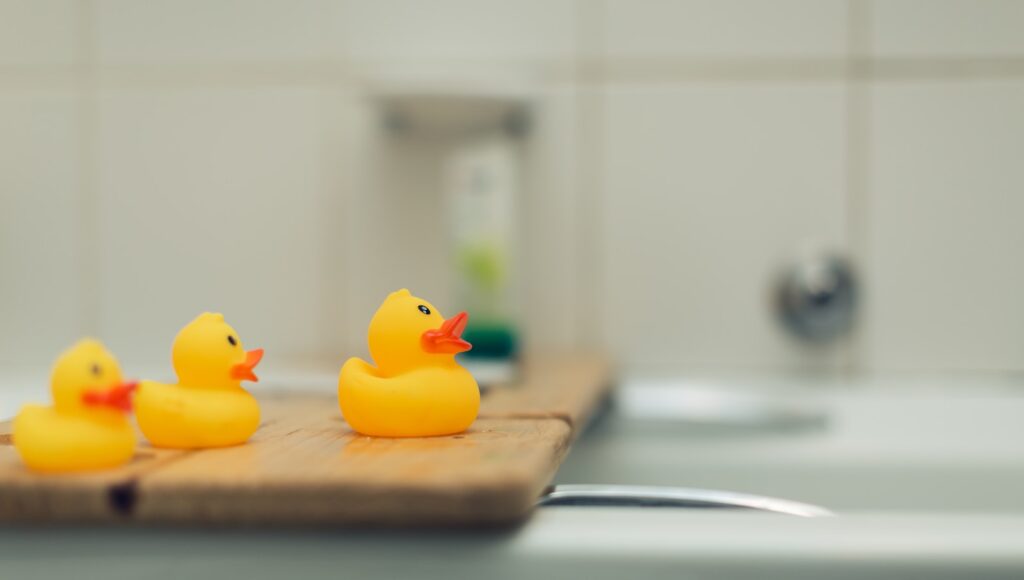
- Synthetic Fragrances: These pop up in everything from baby lotion to diaper cream to detergent. Sure, those “baby fresh” smells might seem harmless, but synthetic fragrances are made from a mix of chemicals—and companies don’t have to tell us what’s in them. For babies with sensitive skin, this can mean irritation, rashes, or even trouble breathing.
- Latex: Latex is everywhere—pacifiers, bottle nipples, and even the elastic in baby clothes. While some babies are fine with it, others can develop allergies over time. Reactions can range from mild irritation to something more serious.
- Mold: Those cute rubber bath toys with tiny holes? They’re mold magnets. Water gets trapped inside, and before you know it, you’ve got a moldy mess—and your baby chewing on it. If you’re shopping for bath toys, stick with solid ones (no holes, sorry Sophie) and make sure they’re designed to dry completely after use.
What to Look For
Now that we’ve covered what to avoid, let’s focus on what you do want in a baby gift. Natural, non-toxic materials are the way to go—things that are gentle on delicate skin and safe enough for curious little mouths. These are the kinds of gifts that don’t just look cute—they feel good knowing they’re safe for all the cuddles, slobbery kisses, and tiny adventures ahead.
Look for Certifications:
When it comes to choosing safe, non-toxic baby gifts, certifications can be your best friend. They take the guesswork out of shopping by ensuring that the materials and manufacturing processes meet strict safety and environmental standards. When you see these certifications, you can feel confident that the gift you’re giving is not only thoughtful but also meets high safety standards. It’s like a little seal of approval for peace of mind.
- GOTS (Global Organic Textile Standard): This is the gold standard for organic fabrics. If you’re buying baby clothes, blankets, or even stuffed animals, the GOTS label means the product is made with organic fibers and free from harsh chemicals, like pesticides and toxic dyes.
- OEKO-TEX Standard 100: Think of this as a safety check for harmful substances in textiles. If a product has this certification, every component—from the fabric to the thread—has been tested to make sure it’s safe for sensitive skin.
- Greenguard: This one is a must for items like mattresses, car seats, or nursery furniture. Greenguard-certified products have low chemical emissions, which helps keep the air in baby’s space cleaner and healthier.
Opt for Non-Toxic Materials (Avoid Plastic):
Let’s face it, babies get up close and personal with their toys, clothes, and blankets—chewing, drooling, and snuggling like pros. That’s why the materials they’re made of are so important. By choosing safer, non-toxic options, you’re giving gifts that won’t just look cute but will also protect that soft, sensitive skin (and those curious little mouths).
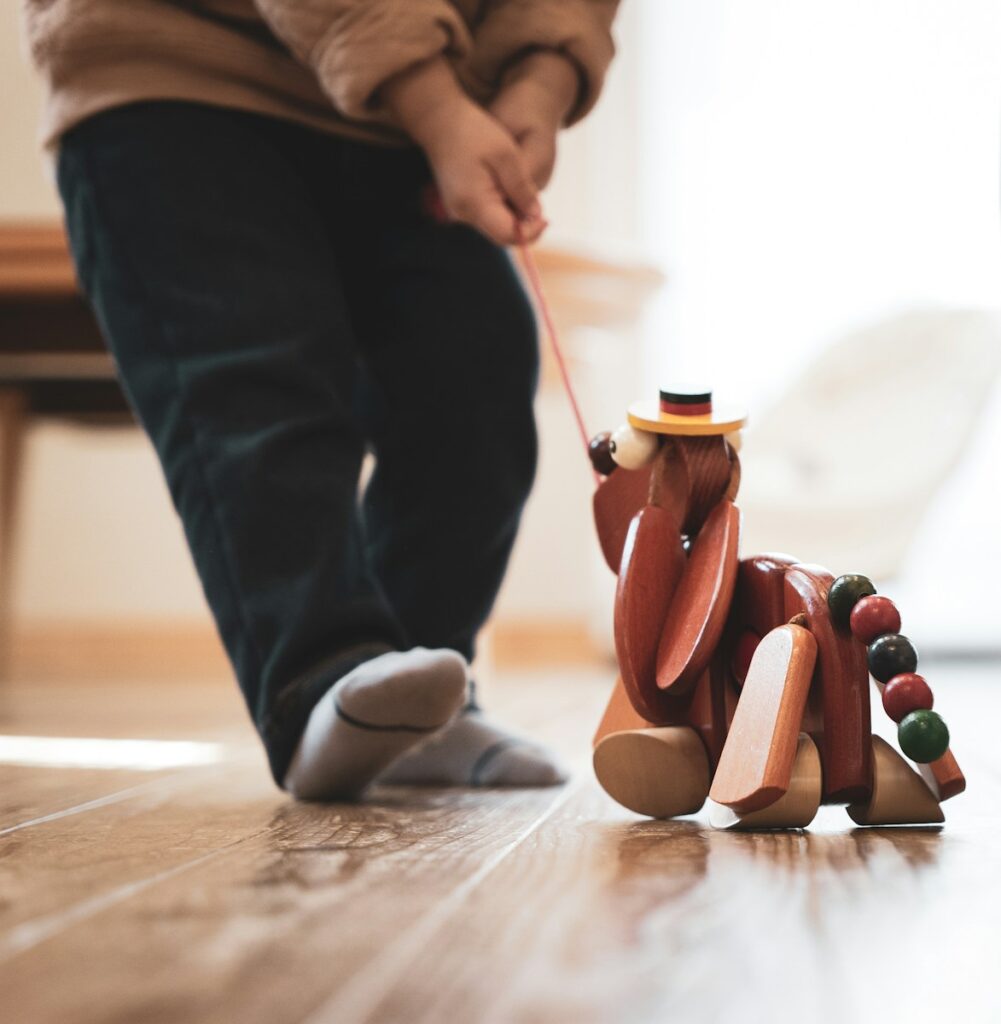
- Organic Cotton: Whether it’s for onesies, swaddles, or that sweet stuffed animal they’ll drag everywhere, organic cotton is a win. It’s grown without pesticides and processed without harsh chemicals, making it gentle on baby’s sensitive skin. Plus, it’s super soft—perfect for cuddles.
- Wooden Toys: Forget noisy, flashy plastic toys. Wooden toys are timeless and sturdy, and they’re much safer too. Look for ones made from untreated wood or finished with non-toxic, water-based paints or vegetable dyes. They’re beautiful and built to last through all the chewing, throwing, and drooling.
- Natural Rubber: For teethers, pacifiers, and bath toys, natural rubber is a lifesaver. It’s durable yet soft enough for little gums, and it doesn’t have the toxic chemicals you’ll find in synthetic rubber or plastic. A simple, safe choice for endless teething sessions.
- PPSU Plastic: If you’re considering plastic, PPSU is your best bet. It’s tough, heat-resistant, and free from harmful chemicals like BPA and phthalates. Think bottles or sippy cups that can handle all the wear and tear without leaching anything nasty.
Read Labels
When it comes to buying non-toxic baby gifts, the label is your friend. Sure, it’s not the most exciting part of shopping, but taking a minute to check what’s actually in a product can save you from unknowingly gifting something full of harmful chemicals. Here’s what to watch for:
- Ingredient Lists: Always look for transparency. Brands that are upfront about the materials they use will list everything clearly on the label or their website. If the label is vague or missing altogether, it’s a red flag!
- Brand Reputation: Stick with brands that are known for their commitment to safety and non-toxic practices. Do a little research or ask other parents for recommendations—it’s worth the extra effort to choose a trusted name.
- Made in China: Unfortunately, many products made in China don’t follow the same safety standards we expect. They’re often made with heavy metals, harmful dyes, or other toxic materials (this includes websites like Temu and Shein). It’s best to steer clear and opt for products made in countries with stricter regulations.
5 Non-Toxic Baby Gifts Under $20
To help you find non-toxic baby gifts, I want to give you a head start with 5 of my personal favorite baby toys. My baby absolutely adores these toys and they are all affordable at under $20 each!
- Lily the Duck: This isn’t just any rubber ducky! Made from 100% natural rubber, it’s completely free of BPA, PVC, phthalates, and nitrosamines. Plus, it’s painted with safe, food-grade paint. And the best part? It’s mold-free, thanks to its sealed, hole-free design. Safe, clean, and adorable!
- HABA Magica Wooden Baby Toy: This classic wooden clutching toy is a must-have for little hands! Made in Germany from solid beech wood sourced from sustainable forests, it’s finished with safe, non-toxic, water-based stains—no harmful paints! Its flexible, durable structure makes it easy to grasp, shake, and enjoy. It’s a safe, eco-friendly toy I feel good about giving to my baby.
- HABA Carousel Wooden Clutching Toy: We love HABA’s wooden toys so much we bought two of them! This one has movable, spinning pieces to captivate babies while encouraging fine motor skills and sensory exploration. I love that they are also considered Montessori toys and that they are rigorously tested for safety.
- Under the Nile Organic Cotton Carrot Veggie Toy: This is one seriously underrated carrot. My baby once played with this carrot for an entire hour! We named him “Garret the Carrot” and he is one of my baby’s favorite toys. Plus, it’s also a teether! I feel comfortable with my baby putting it in his mouth since it’s made with GOTS certified organic cotton.
- Shumee Wooden Penguin Wobbler: Who doesn’t love penguins? This wobbler toy is super cute and perfect for babies that are just starting to move around. It’s engaging and great for tummy time. Shumee uses natural wood and the paints are lead-free, water-based, and completely non-toxic.
Tips for Finding Affordable Non-Toxic Baby Gifts
- Shop Small Businesses: Many small brands specialize in safe baby products.
- Look for Sales: Sign up for email alerts from non-toxic baby brands.
- Consider Multipurpose Gifts: Items like wooden activity gyms have long-lasting value.
- Join a Buy-Sell-Trade Group: Many parents resell non-toxic toys and clothes in excellent condition.
- Choose Handmade Gifts: get creative with knitted blankets or crocheted toys. If you’re not the crafty type, don’t worry! Etsy is a great place to find special, handmade baby gifts. Plus, you get to support a small business shop. Just make sure the materials used are natural and safe.
You may also find these Posts helpful
create a non-toxic nursery
Final Thoughts
By choosing non-toxic baby gifts, you’re not only giving something special but also helping to create a healthier, safer environment for the little one. These small changes can have a big impact on your baby’s health and future well-being.
I know how overwhelming it can be to choose organic, non-toxic products, but you don’t have to do it alone!
Thank you for joining me in creating a safer, healthier environment for your baby. I’m so glad to have you along for the journey!
join the newsletter
Want more non-toxic guides? Subscribe today.
